"Canning Not for the Apocalypse, but for Right Now"
A recipe for Tomato-Ancho Jam, and how Bruce Weinstein and Mark Scarbrough's new book COLD CANNING makes home preserving fun and frictionless
Hi all — lots going on in this newsletter! We’ve got…
Canning the “cold” way, which is faster, easier, and arguably more fun
A chance to win a copy of Bruce Weinstein and Mark Scarbrough’s new book Cold Canning {giveaway closed}
A short Q&A with Bruce & Mark on their impressive catalog of books and this new one
A recipe for their Tomato-Ancho Jam, which you can whip up in less than an hour.
Next week, paid subscribers will get a new recipe that utilizes this jam (or another jam you like) and as a teaser — it involves beans. Thanks for reading! —LV
When I think of canning, I picture my mom in one of her old t-shirts with the sleeves rolled up, navigating the swampy haze of my Aunt Cinda’s or another friend’s kitchen, where they spent a full day turning a crate of peaches, tomatoes, or cucumbers into jarred foodstuffs.
Mom wasn’t really a canner and probably wouldn’t have done it on her own, but growing up in Idaho where Mormon preservation traditions run deep, she knew a few people who were. And on the scale that they did it, it was absolutely a team effort.
It was also a giant mess. Produce carnage everywhere, multiple boiling pots, wet towels draped over anything that could pass for a hook, and the special equipment that look like torture devices — the canning rack, the “jar lifter.”
So the most salient fact of canning as I’ve ever known it is that it’s a massive, all-consuming project.
And for this reason, I was so excited to hear about Bruce Weinstein and Mark Scarbrough’s new book Cold Canning. This is a book that makes sense to me, someone who, like my mom, is really not a canner but might like to dabble in it every now and then. It’s so inviting:
Smaller yields of just two or three jars, which means you don’t need a truckload of produce or any special equipment;
Those smaller yields mean lower stakes, so that you can play around with different flavors as the season progresses (Cold Canning has 425 recipes — you won’t run out of ideas);
No water bath, no popped seals to worry about — the refrigerator or freezer (marvels of modern day technology!) simplify all that;
And a negligible time commitment, which, for me, turns canning into a fun, quick activity that I’m likely to do more often.
I’ve been trying some of these small-scale canning projects over the past few weeks. I made sencha-spiked cucumber pickles, a cherry-pistachio salsa macha, and tomato-ancho jam, which you can find the recipe for below. All have been a thrill, easy to slip in between other cooking projects, and a delicious way to turn simple meals into something special.
If you aren’t familiar with Bruce and Mark, they are some of the most prolific and hardworking cookbook authors out there, with more than 35 cookbooks to their names. They’ve written everything from Instant Pot tomes to books on ice cream and whole grains, and I was very excited to catch them for a short Q&A about this new book.
{GIVEAWAY CLOSED} Win a copy of Cold Canning, courtesy of the publisher, by commenting below with your favorite produce to preserve. Leave your comment before 11:59pm EST on Thursday, July 23, and a winner will be chosen at random.
NO PURCHASE NECESSARY. Enter between July 18, 2025 and July 24, 2025. A winner will be chosen at random. Open to US residents, 18 and older. Void where prohibited or restricted by law.
Q&A with Bruce & Mark
You’ve written over 35 books together. How does the idea for a new one come to you? When did you know that Cold Canning had the legs to be a full book?
We’re always thinking about book ideas! Whenever we eat a new food, try a new cuisine, travel to a new place, shop in a new food store we think, hmmm, can this work into a new book? But yes, a book must appeal to a wider audience than our palates! Our publisher has a standard he applies to all proposals: Does this answer a question people are asking? Even so, it was actually our publisher who brought up the notion that we should write a canning book. We knew there were dozens of canning books out there. We knew we had to put our own spin on it to make it stand out. After months of noodling on canning, we came up with the idea of “cold canning”: small batches, two or three jars, no steam or pressure canner, no trunkloads of fruit or vegetables needed — canning, not for the apocalypse, but for right now.
What is your background with home preserving?
Growing up, Mark spent the summers on his great-grandparents’ farm in Oklahoma. His grandmother would put up everything from green beans to ground beef! By contrast, Bruce grew up in New York City, not known as a canning Mecca. But he started making his own preserves twenty years later, lining the bookshelves in his one-bedroom apartment with berry and fruit concoctions from the ubiquitous corner fruit venders. When farmers’ markets hit New York City in the 1990s, we were already writing cookbooks and quickly launched into dozens of articles for Eating Well, Cooking Light, Fine Cooking, and WeightWatchers on the joys of putting up whatever was fresh in the markets.
Canning is often about making the most of peak-season produce, but are there other places to find good-quality fruit and vegetables to preserve?
While it’s the goal to use the best fruits and vegetables for preserves, conserves, and chutneys, there are plenty of options for making delicious homemade preserves all year round. We find that frozen blueberries and blackberries are terrific in most recipes. And beyond the expected, cabbage is always available for a small batch of sauerkraut or kimchi. Dried chilies are available all the time for salsa matchas. Pineapples and kiwis are year-round staples for incredible jams. And citrus is a winter product in North America, so a small-batch of, say, blood orange or grapefruit marmalade a quick cold-afternoon project.
People might expect a book full of vegetable pickles and fruit jams, but Cold Canning has much more than that. What defines its scope?
If you can preserve it in a jar by keeping it in the fridge or freezer, we included it in Cold Canning. That’s how we get to things like dessert sauces (hot fudge and salted caramel), to savory condiments like chili crisps and mustards, to infused oils and vinegars, and to inventive syrups and liqueurs for cocktails.
What are some of your favorite ways to turn some of these preservation projects into meals?
All it takes to turn a simple grilled cheese into an incredible dinner is to spread the bread with fennel relish before adding the cheese. Toss some cubed potatoes and chicken thighs with a dollop of rose harissa and dinner went from ordinary to outrageous with just one ingredient. A simple piece of grilled salmon becomes so much more with a dollop of our Spiced Tapenade, made with preserved lemons and pomegranate molasses. From the shortcut red mole to the marinated artichokes, these recipes are the basis of creative cooking, although they can mostly make even simple dinners memorable.
For more about Bruce & Mark, visit their website.
Tomato-Ancho Jam
From Bruce & Mark: “Ancho chilis (aka dried poblano chilis) have an earthy, bittersweet flavor without a great deal of heat, particularly if you remove the desiccated seeds. Anchos pair well with tomatoes to make this condiment a gorgeous spread for cheese platters, a mid-afternoon snack with crackers, or even a topper for hot dogs (skip the ketchup!). We use large, beefsteak tomatoes here because they’re a little less sweet than cherry tomatoes, a better contrast to the anchos.”
Variations: Substitute other dried chilis (by weight) for the anchos: chipotles for a darker, smokier spice; guajillos for a tangy heat; or pasilla chilis for a sweeter, velvety heat.
LV notes: I’ve made this twice and love it on toast, on oatmeal, in a grilled cheese, and right off a spoon. If you have feelings about tomato skins, you can peel the tomatoes before chopping them by making an X in the base of each one, and then dropping them one-by-one into a pot of boiling water for 10-15 seconds. Let them cool for a few moments until safe to handle, and then the skin should slip right off.
Recipe appears in Cold Canning: 425 Small-Batch Jams, Jellies, Chutneys, Chili Crisps, Pickles, Sauerkrauts, Kimchis & More, copyright 2025, shared with permission of Voracious, an imprint of Little, Brown and Company.
Yield about 2 cups | Prep time 25 minutes | Cook time About an hour | Storage Refrigerate for up to 3 weeks, freeze up to 1 year
2 dried ancho chilis (about ¾ ounce or 20g total weight), stemmed
Boiling water as necessary to soak the chilis
1 ⅔ pounds (750g) beefsteak tomatoes (about 4 large), cored and chopped
1¼ cups (250g) granulated white sugar
2 tablespoons lemon juice
1 tablespoon (15g) grated peeled fresh ginger
1 teaspoon kosher salt
½ teaspoon ground cumin
¼ teaspoon ground cinnamon
¼ teaspoon ground cloves
1. Tear the dried chilis into chunks, removing the seeds for less heat if desired. Set the chili pieces in a small, heat-safe bowl and add enough boiling water to submerge them. Set a small heat-safe plate on the chilis to hold them down and soak at room temperature for 20 minutes.
2. Uncover and drain the chilis in a colander set in the sink. Put them in a food processor and about one quarter of the chopped tomatoes. Cover and process to create a fairly smooth puree.
3. Pour and scrape this mixture into a medium saucepan. Add the remaining chopped tomatoes, the sugar, lemon juice, ginger, salt, cumin, cinnamon, and cloves. Set the pan over medium-high heat and bring to a boil, stirring often.
4. Reduce the heat to low and simmer, stirring often, until thick enough that you can run a wooden spoon across the bottom of the pan to make a line that holds its edges for a second, about 1 hour.
5. Turn off the heat and remove the pan from the burner. Transfer to two clean ½ pint (236 ml) jars or other containers, leaving about ½ inch (1 cm) headspace in each. Cover or seal. Cool at room temperature for no more than 1 hour, then refrigerate or freeze. In the fridge, the jam will not reach its best flavor for 24 hours.


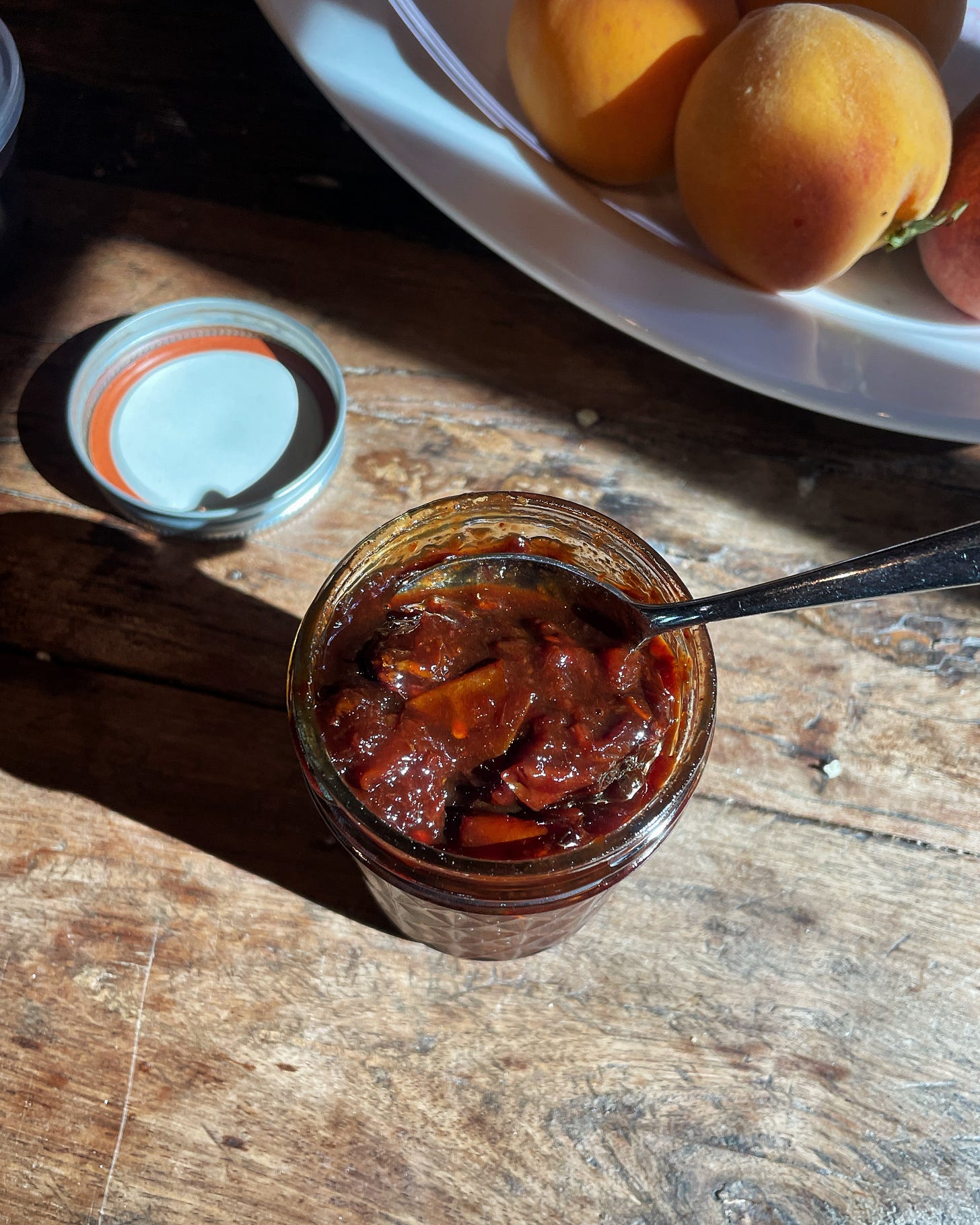
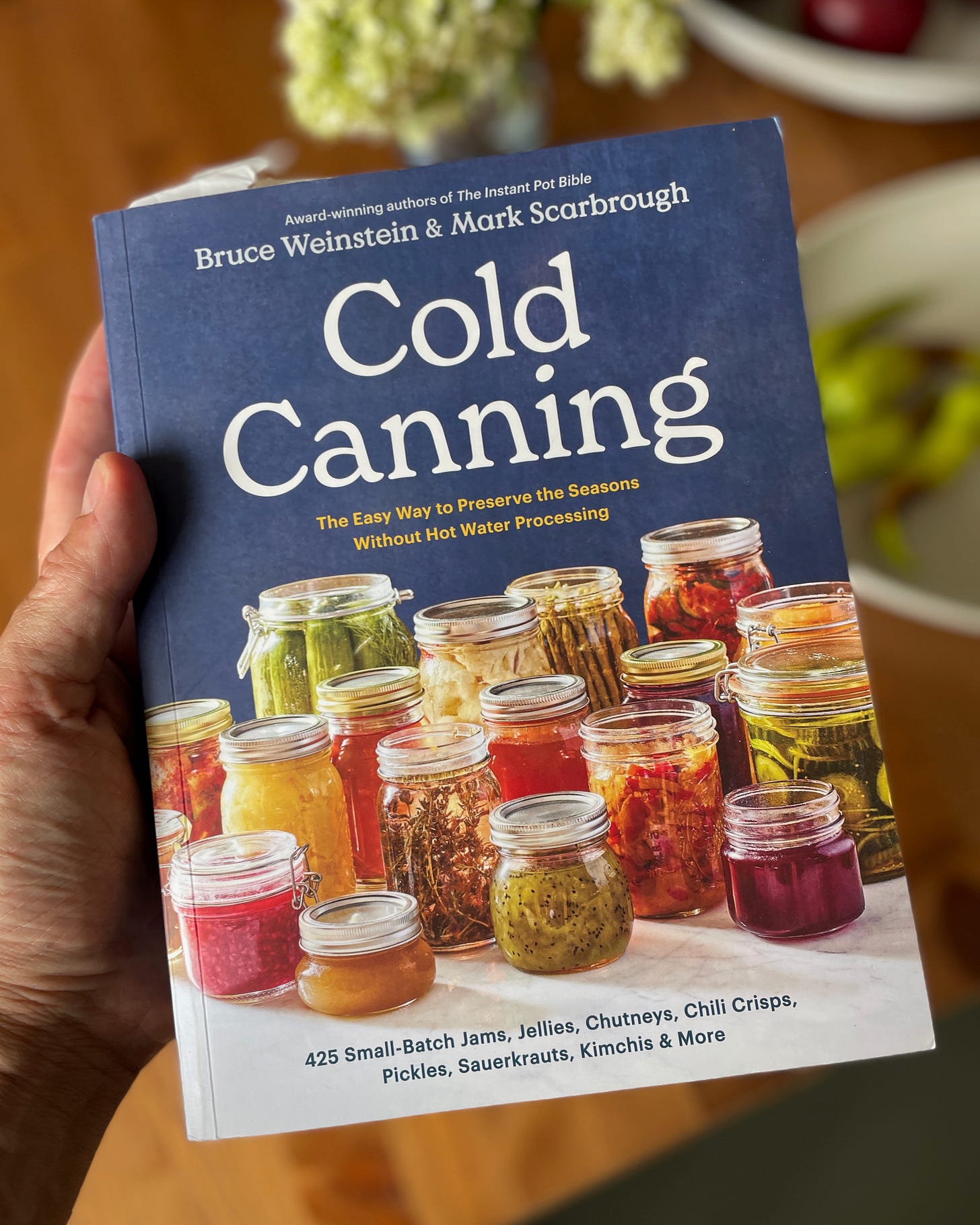
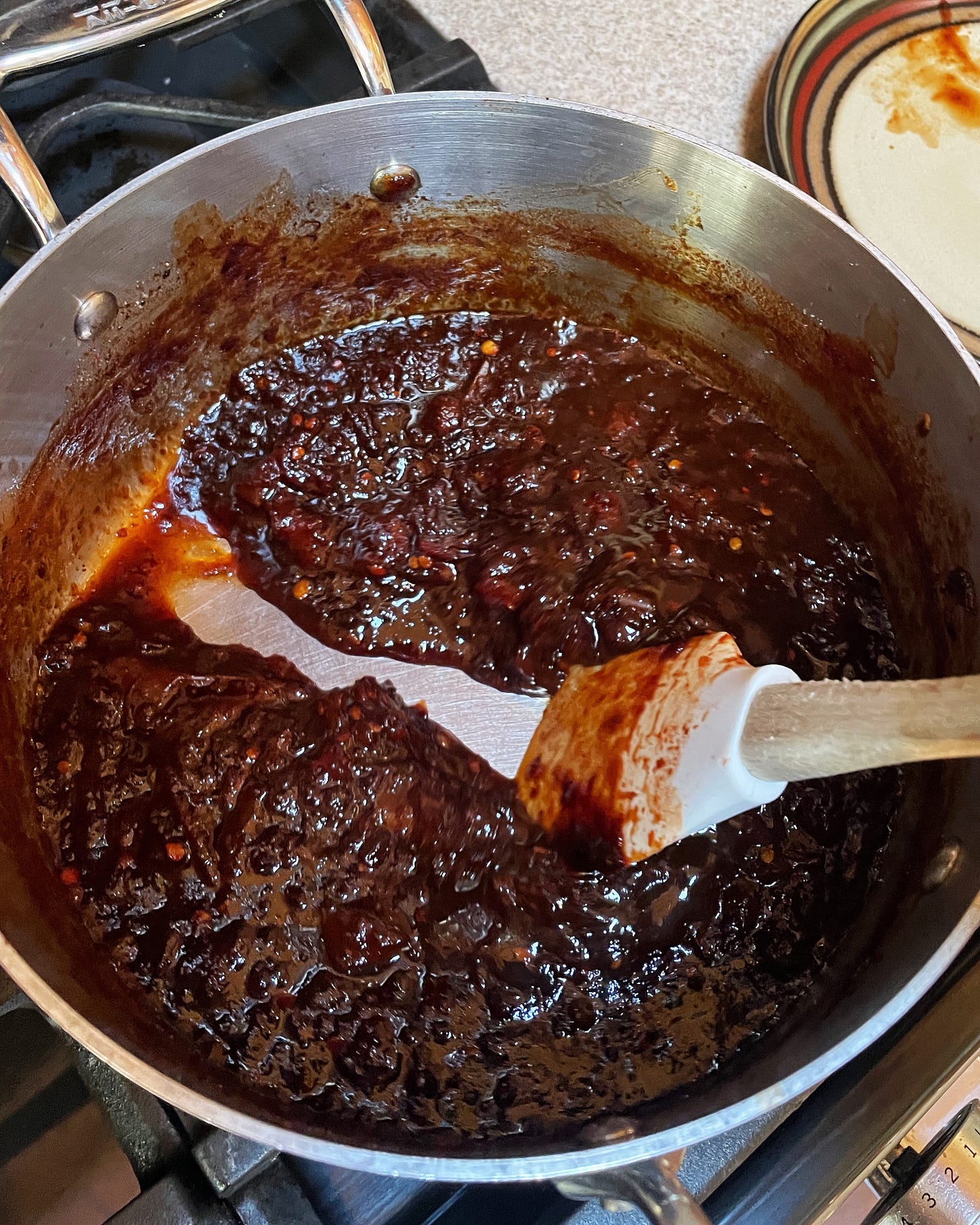
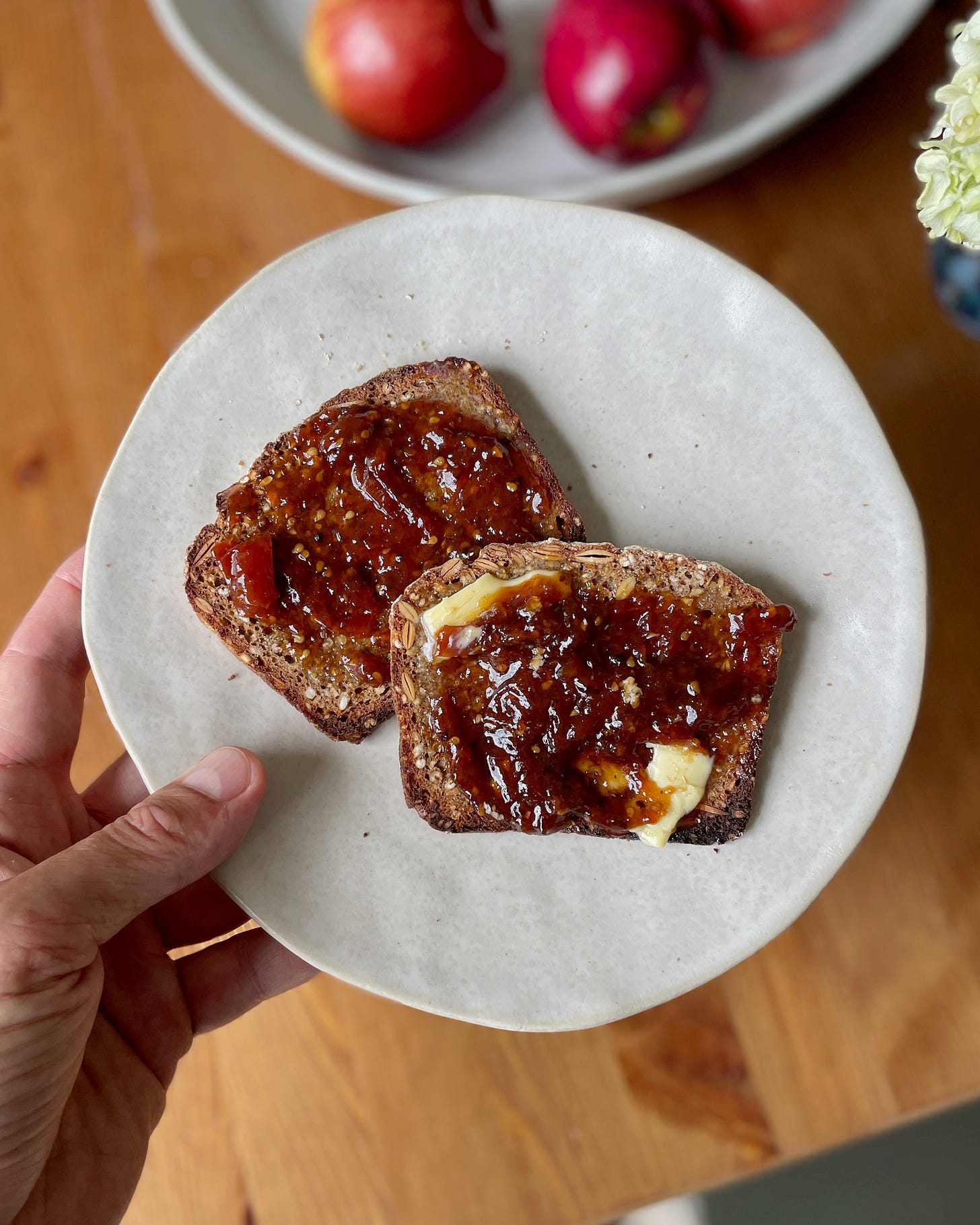

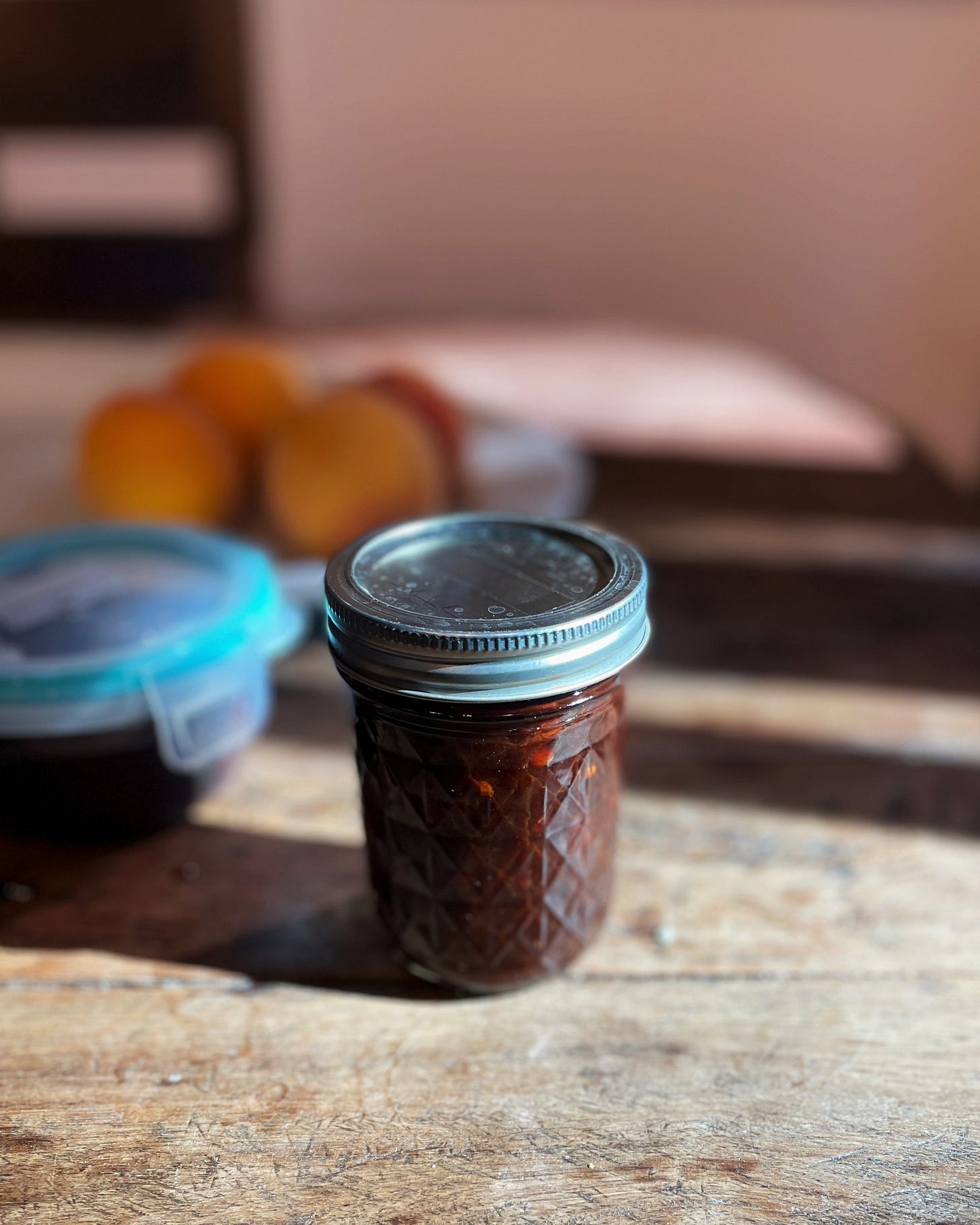
As a result of canning the contents of the CSA basket, I discovered pickled kohlrabi. It was sooooo good! Thanks for your recipes and fun newsletter!
I had a good chuckle reading your article! Yep, I’ve been canning for 50 years (I’m 70!) and slugging away at giant cases of produce, burning my hands on splattering jelly, and pirate bubbles of canning water! All the while thinking there had to be a better way. Would love to win the “cold Canning “ cookbook. Thanks for all your great articles. Keep them coming.